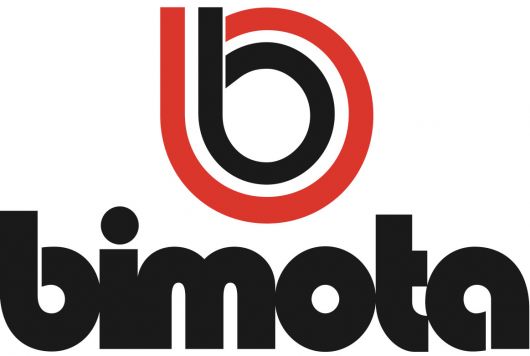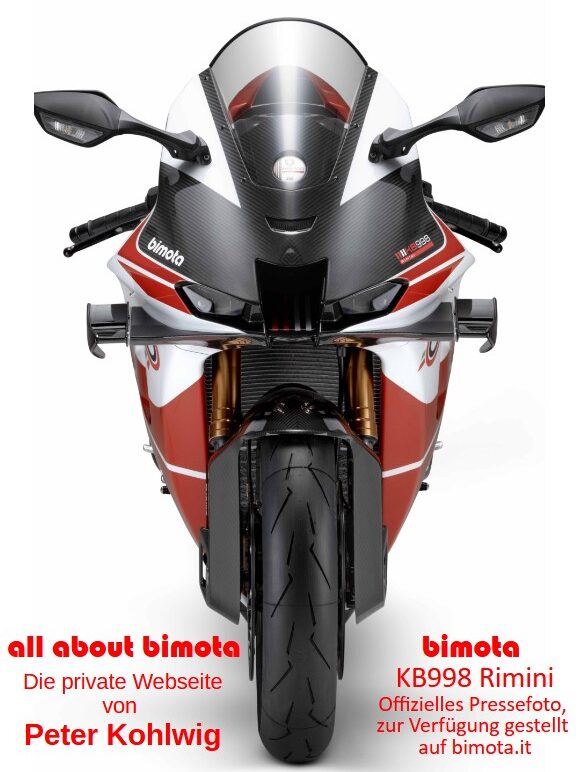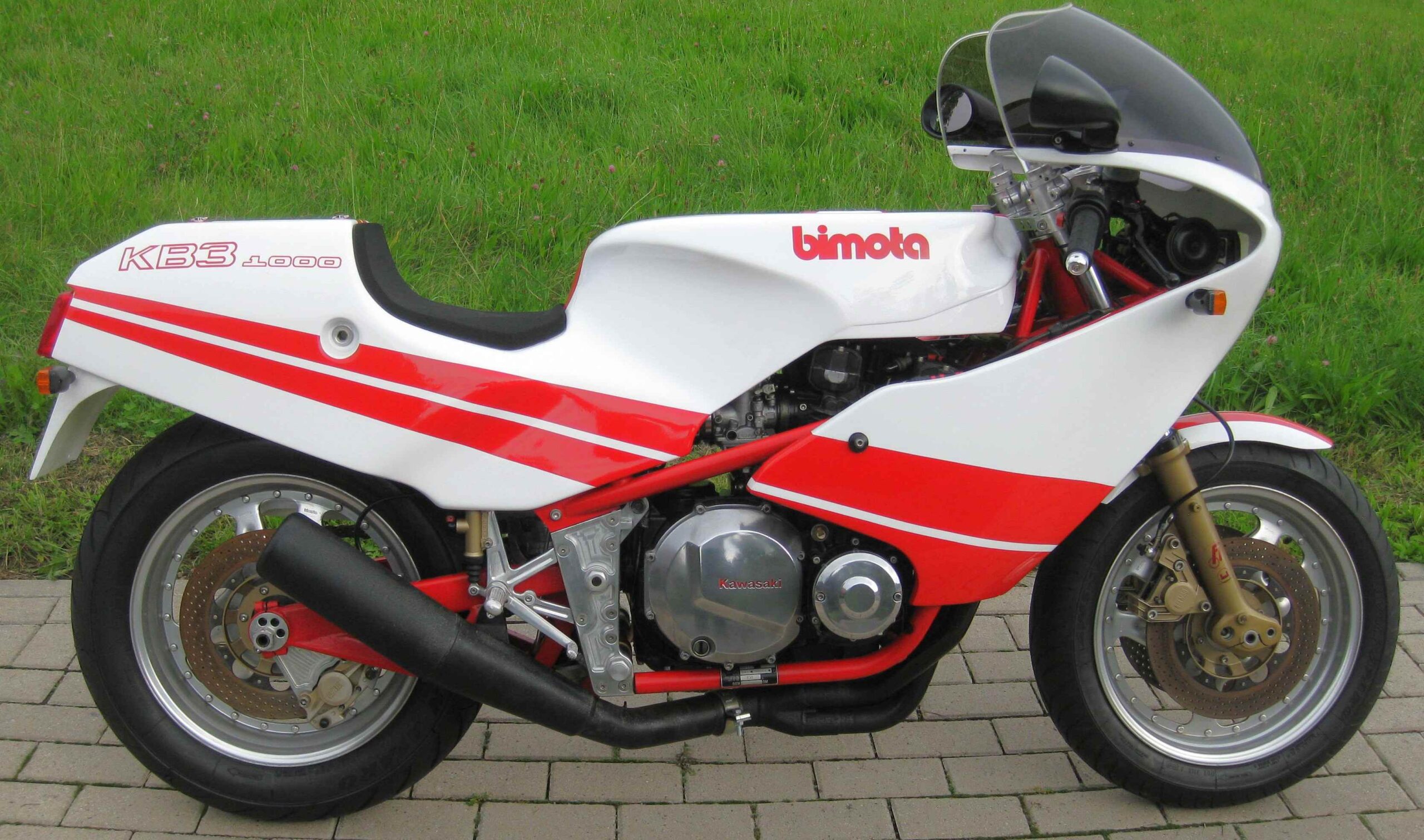
| Designer | Massimo Tamburini | First presentation | Cologne 1982 |
| Production period | 1983 – 1984 | Production numbers | 112 thereof 80 as kits |
| Power | 75 KW (103 PS) | Displacment | 998 ccm |
| Topspeed | 240 km/h | Weight | wet 226 kg dry 209 kg |
| Price | 30.900 DM (1984) 22.790 DM as kit | Colours | 96 white / red 16 grey / red |
| Technical basis | Kawasaki Z1000R | GPx 1100 |
The second model of the new frame generation, the KB3, utilizes the technology of the Kawasaki Z 1000 J. The air-cooled inline-four engine, featuring dual overhead camshafts and two valves per cylinder, delivers 103 hp at 9,400 rpm in the Bimota. Apart from additional Kawasaki components such as controls, cockpit, etc., the KB3 is technically and visually identical to the HB2.
Like the HB2, the KB3 is only available with a half fairing. A full fairing is introduced for this frame—modified slightly to accommodate the necessary mounting points—starting in 1984 with the SB4 S models and later with the HB3 S and YB5.
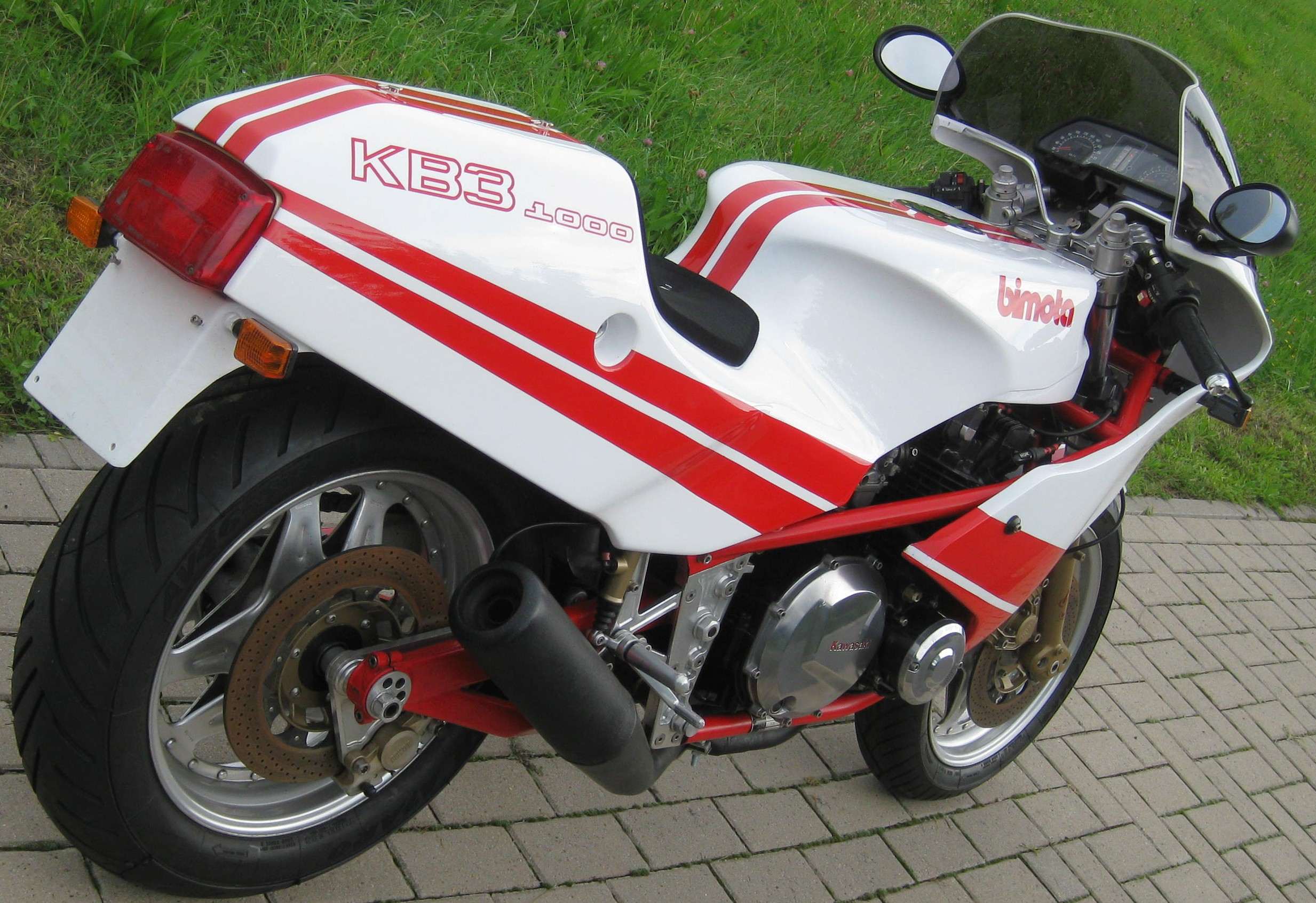
The American motorcycle magazine Motorcyclist described the fascination with the KB3 in its July 1984 issue with the words:
„Bimota’s KB3 is a motorcycle that inspires emotional extremes. You either love it or do not give two hoots about it. To pass it off as overpriced and under whelming, you need only to ride it the way you would do any production motorcycle. It is perhaps the most uncomfortable machine you can buy. Its suspension is taut, vibration buzzes the stubby clip ons bars, the bulk of your weight is carried on your arms, your 36 inch legs are crammed into a 20 inch space, and the seat offers little more cushion that another layer of paint.
Compared to the contemporary offerings from Japan, the Bimota is as comfortable as a concrete pillow.To fall hopelessly under the KB3’s spell requires a rare combination of insanity and competence. Born of the Italian school of thought that celebrates single purpose function above all else, the KB3 has no extraneous components, just the bare essentials required to attain the Bimota design goal. Its intent is crystal clear, pure unfettered speed for which to those with the rare combination, there can be no substitute. The KB3 is exactly what it appears to be, a Grand Prix bike with lights (well some) and a sidestand. On a long fast sweeping road or track, nothing short of a full-blown GP machine comes close to the Bimota.“
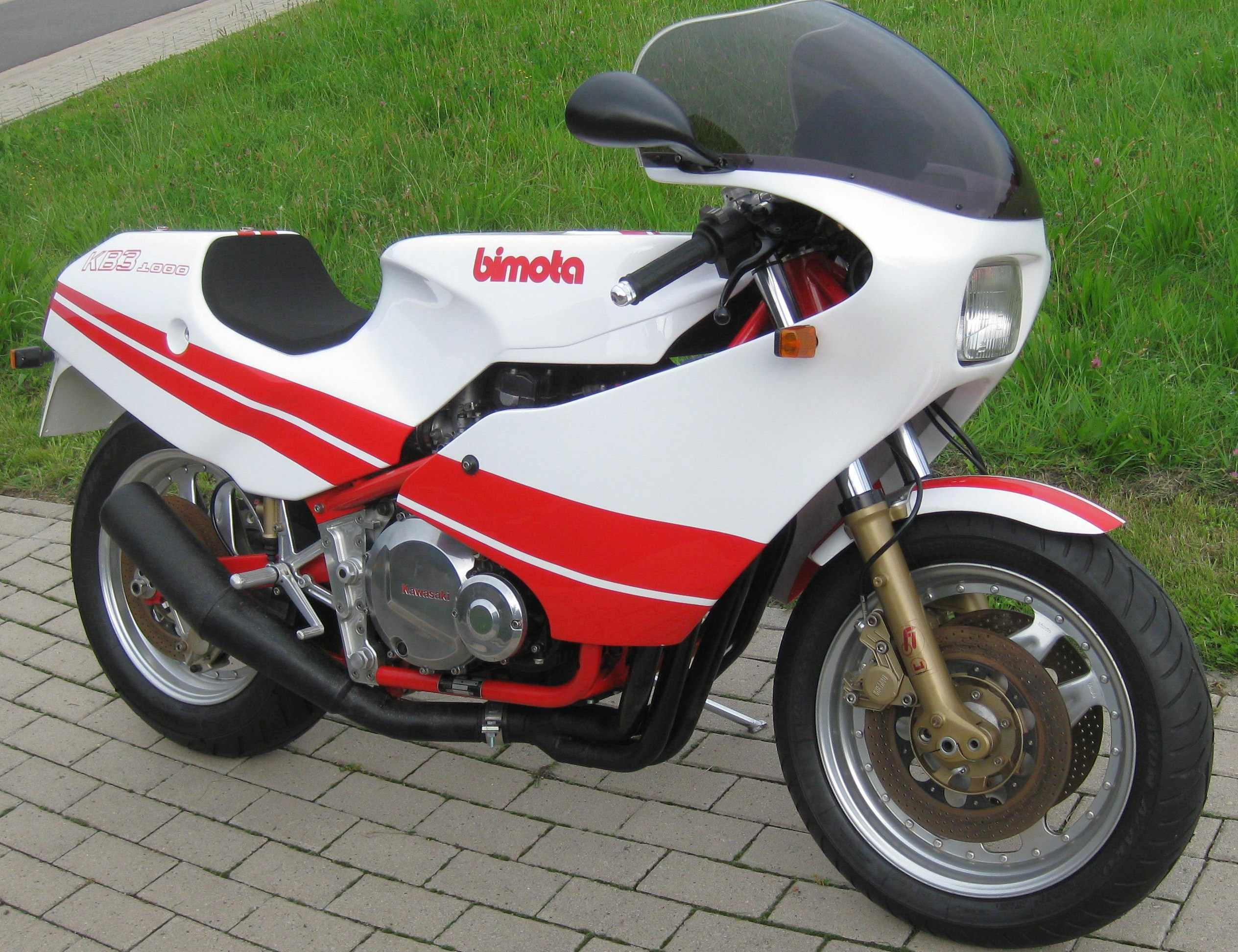
Bimota motorcycles typically cost at least twice, or more often three times, as much as mass-produced machines with the same engine displacement—placing them in the price range of mid-class cars. A major reason for this is the difficulty a small-scale manufacturer faces in sourcing parts. Apart from the SB2 (at least for the first 50 units, for which the components were supplied by Suzuki Italy) and the SB3, which was developed in cooperation with Bimota Germany, a brand-new production motorcycle must be purchased for every model built in order to obtain the necessary components such as engine, cockpit, wiring harness, lights, etc., to build their own motorcycles.
This, along with the complex manufacturing process, the limited production numbers, and the high-quality chassis and braking components, is a key factor in the very high price level. It also explains why most classic Bimotas were sold as kits until the mid-1980s. In the case of the KB2, 80 kits were sold alongside 32 complete motorcycles.
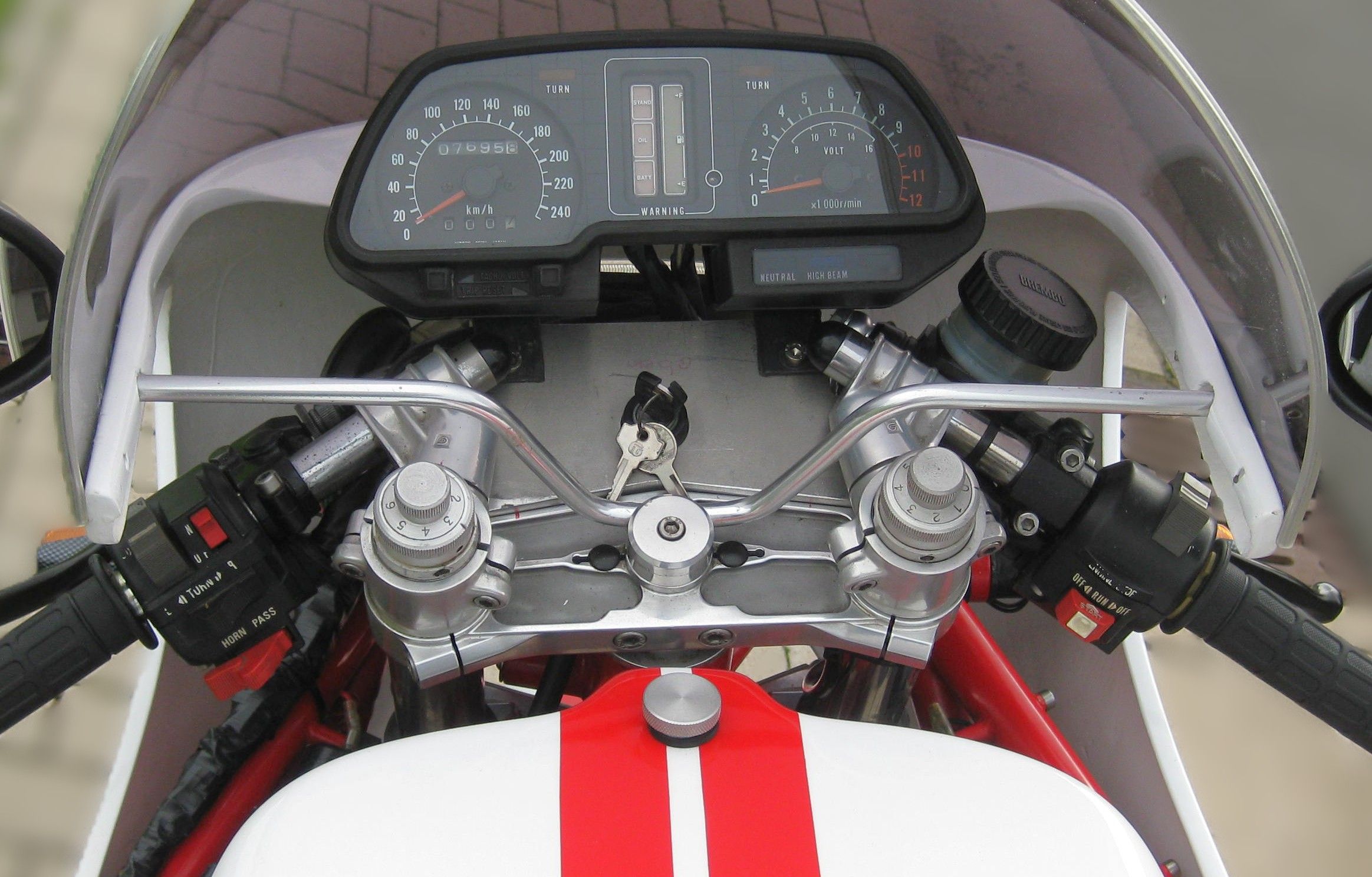
It was not until the late 1980s, when Yamaha became the general importer for Bimota in Japan, that the company was first able to source individual components from a major manufacturer.
Nevertheless, there was no shortage of buyers for these exclusive motorcycles, which were capable of reliably transferring the power of Japanese big-bike engines to the road. Other renowned manufacturers such as Egli, Rickman, Martin, Rau, and Harris also served this lucrative market.
